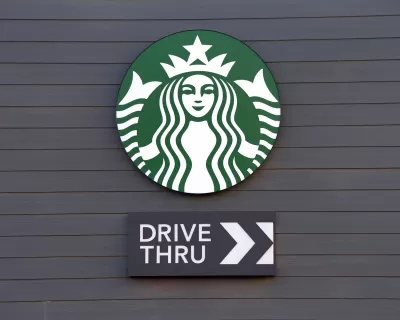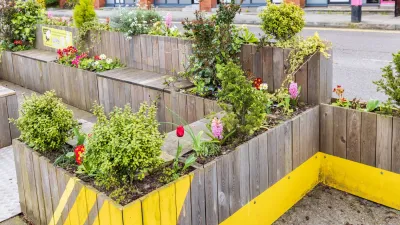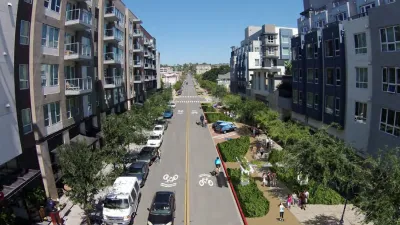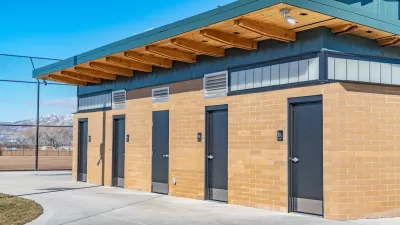Starbucks is shifting to more drive-throughs and less comfy armchairs, but that doesn’t mean the demand for common spaces outside of home and work is waning.

For years, a local Starbucks coffeeshop was a welcome respite for students, freelance workers, and others seeking a comfortable hangout with a clean bathroom. While Starbucks is a private business, it was once common for patrons to sit for hours while making only a couple of purchases. This made Starbucks and its ilk a valuable ‘third place,’ a communal space separate from home or work where social interactions happen.
“These places could be anything from neighborhood watering holes to bookstores, barbershops, community centers or even stoops,”write James Rojas and John Kamp in Strong Towns. By 2022, Starbucks and other businesses are shifting to a new model: “Across the country, cozy lounge chairs were replaced with metal stools — where seating wasn’t done away with altogether. Bathrooms, outlets and tables also disappeared. The company even departed from its 1990s ethos and promised to outfit 90% of new locations with “state-of-the-art” drive-thrus.”
The authors quote Nathaniel Meyersohn, who wrote that Starbucks is “choosing the transactional over the experiential,” explicitly redefining the third place to include digital technology, reducing the importance of the physical space. “The Starbucks where you studied for finals with your classmates, recovered from that awkward first date, won a chess match and took that job interview no longer exists. It’s now a conveyor belt where speed rules and the ideal customer experience is spending as little time in the store as possible.”
While this could seem as a harbinger of doom for other third places, Rojas and Kamp note that other urban cafes, parks, and pocket plazas, many created during the pandemic, are thriving; “the appetite for traditional, physical third places hasn’t disappeared.”
FULL STORY: From Hang Out To Hurry: Why Starbucks Wants To Redefine “Third Place”

Planetizen Federal Action Tracker
A weekly monitor of how Trump’s orders and actions are impacting planners and planning in America.

Map: Where Senate Republicans Want to Sell Your Public Lands
For public land advocates, the Senate Republicans’ proposal to sell millions of acres of public land in the West is “the biggest fight of their careers.”

Restaurant Patios Were a Pandemic Win — Why Were They so Hard to Keep?
Social distancing requirements and changes in travel patterns prompted cities to pilot new uses for street and sidewalk space. Then it got complicated.

Platform Pilsner: Vancouver Transit Agency Releases... a Beer?
TransLink will receive a portion of every sale of the four-pack.

Toronto Weighs Cheaper Transit, Parking Hikes for Major Events
Special event rates would take effect during large festivals, sports games and concerts to ‘discourage driving, manage congestion and free up space for transit.”

Berlin to Consider Car-Free Zone Larger Than Manhattan
The area bound by the 22-mile Ringbahn would still allow 12 uses of a private automobile per year per person, and several other exemptions.
Urban Design for Planners 1: Software Tools
This six-course series explores essential urban design concepts using open source software and equips planners with the tools they need to participate fully in the urban design process.
Planning for Universal Design
Learn the tools for implementing Universal Design in planning regulations.
Heyer Gruel & Associates PA
JM Goldson LLC
Custer County Colorado
City of Camden Redevelopment Agency
City of Astoria
Transportation Research & Education Center (TREC) at Portland State University
Camden Redevelopment Agency
City of Claremont
Municipality of Princeton (NJ)





























